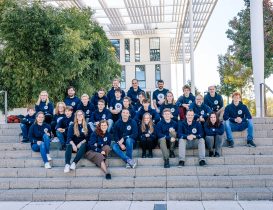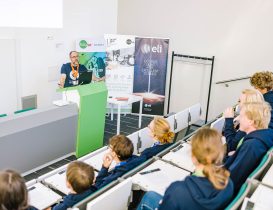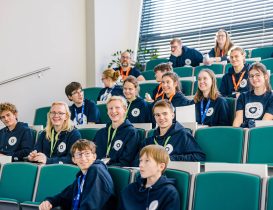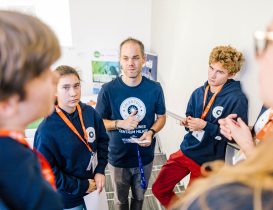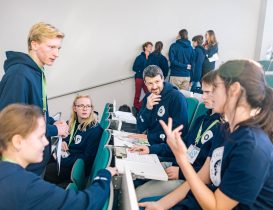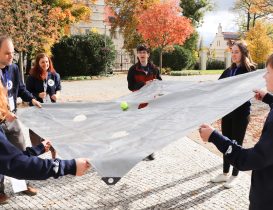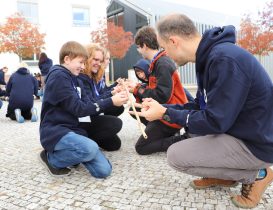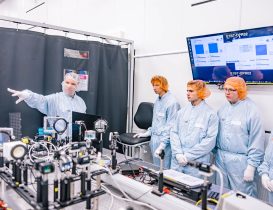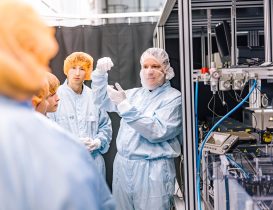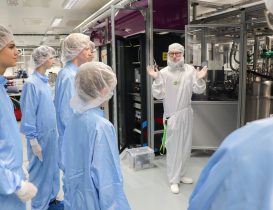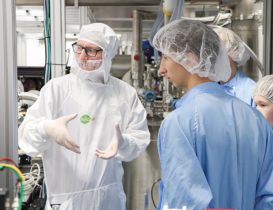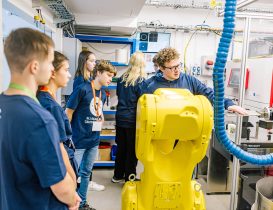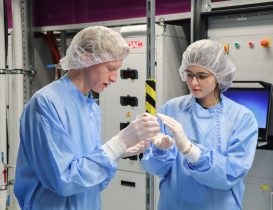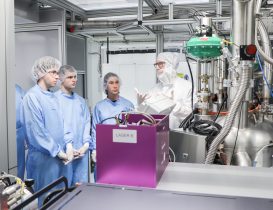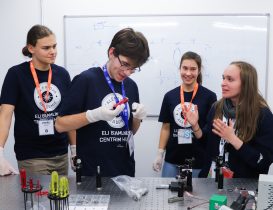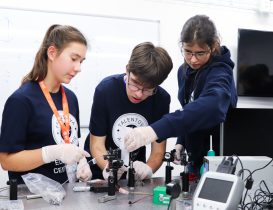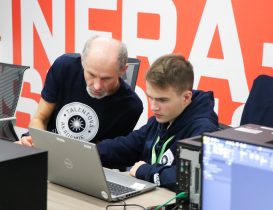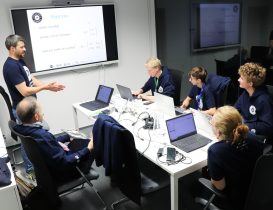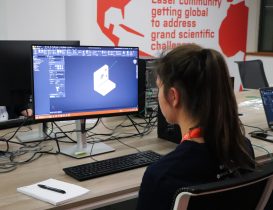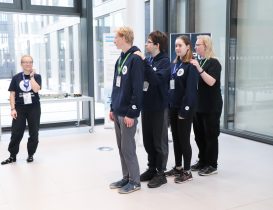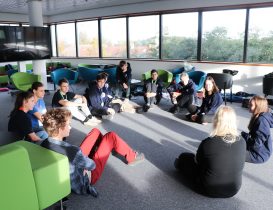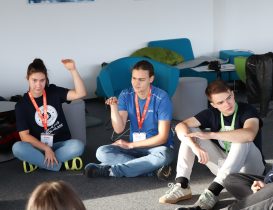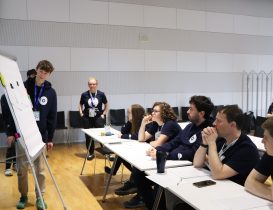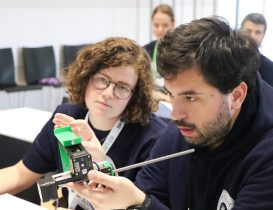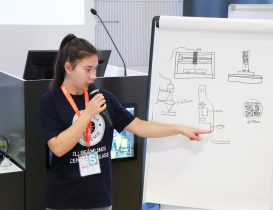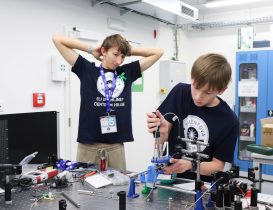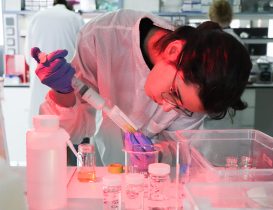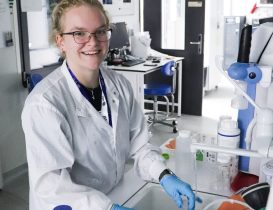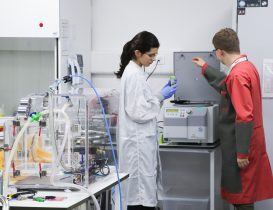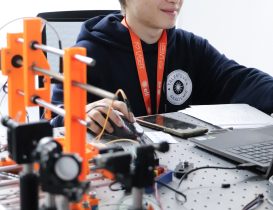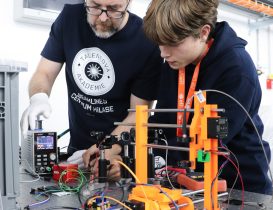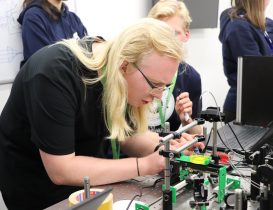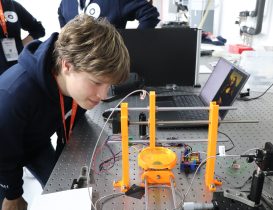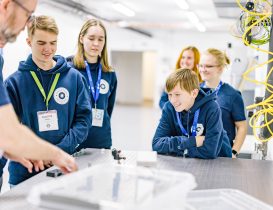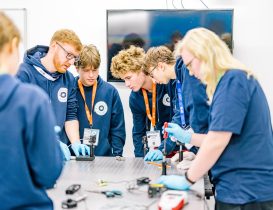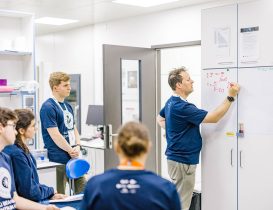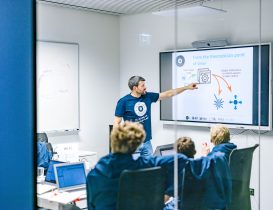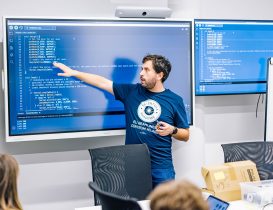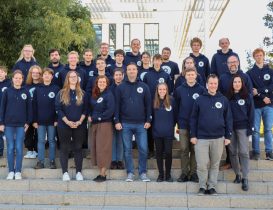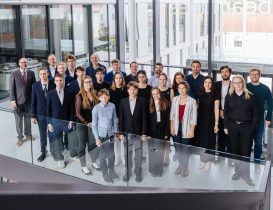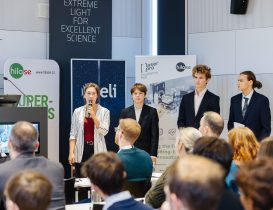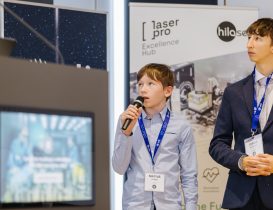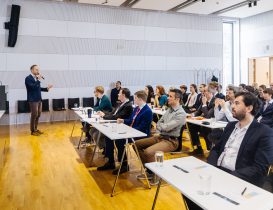Twelve talented high school students from the Czech Republic and Slovakia transformed into scientists and inventors for a weekend. They designed and built their own laser printers. At the finale of Talent Academy 2025, organized by the HiLASE and ELI Beamlines research centers, they combined their knowledge of physics, chemistry, and programming to replace conventional ink and paper with a laser beam and a photosensitive gel. The result? The first images and QR codes “printed” with light – clear proof that science can be both an adventure and an art form.
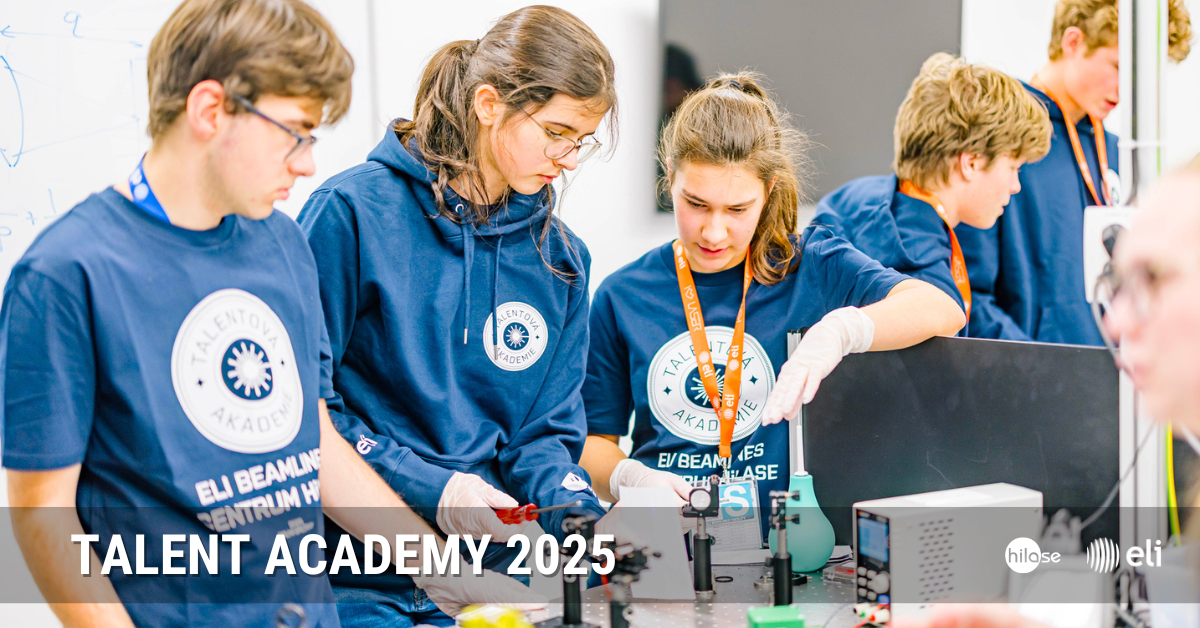
These days, we are looking for greener solutions in almost every part of life, from transportation to food production. Few people, however, realize that even ordinary printer inks often contain hazardous substances, including organic solvents. A promising alternative comes in the form of new biodegradable, non-toxic materials that still offer high sensitivity and strong contrast.
This year, participants of the Talent Academy finale, an educational program run by the laser centers HiLASE (Institute of Physics of the Czech Academy of Sciences) and ELI Beamlines (ELI ERIC), explored exactly this kind of modern material. Over the course of a single weekend, twelve gifted students from the Czech Republic and Slovakia were challenged to design and build a fully functional laser printer that used a laser beam and a photosensitive gel made from vitamins C and B2 instead of traditional ink and paper.
From Chemistry to Lasers
Three teams, mentored by senior scientists Tyler Green, Yoann Levy, and Michal Vyvlečka, had just 30 hours to learn how to prepare and control photochemical materials to precisely guide the transformation of matter in space and time. This required not only advanced chemistry skills, but also building the printer itself using simple linear motors and custom 3D-printed parts.
The students also developed software that translated digital images into the language of their printers, turning them into motor movements and laser control. Finally, they built a complex optical system that directed the laser beam into the printer’s optical fiber.
“It was fascinating to see how quickly the students picked up coding, learned to work with optical fiber, and started solving challenges that real research teams face every day,” says Šimon Šatra, laser workshop instructor from HiLASE Centre.
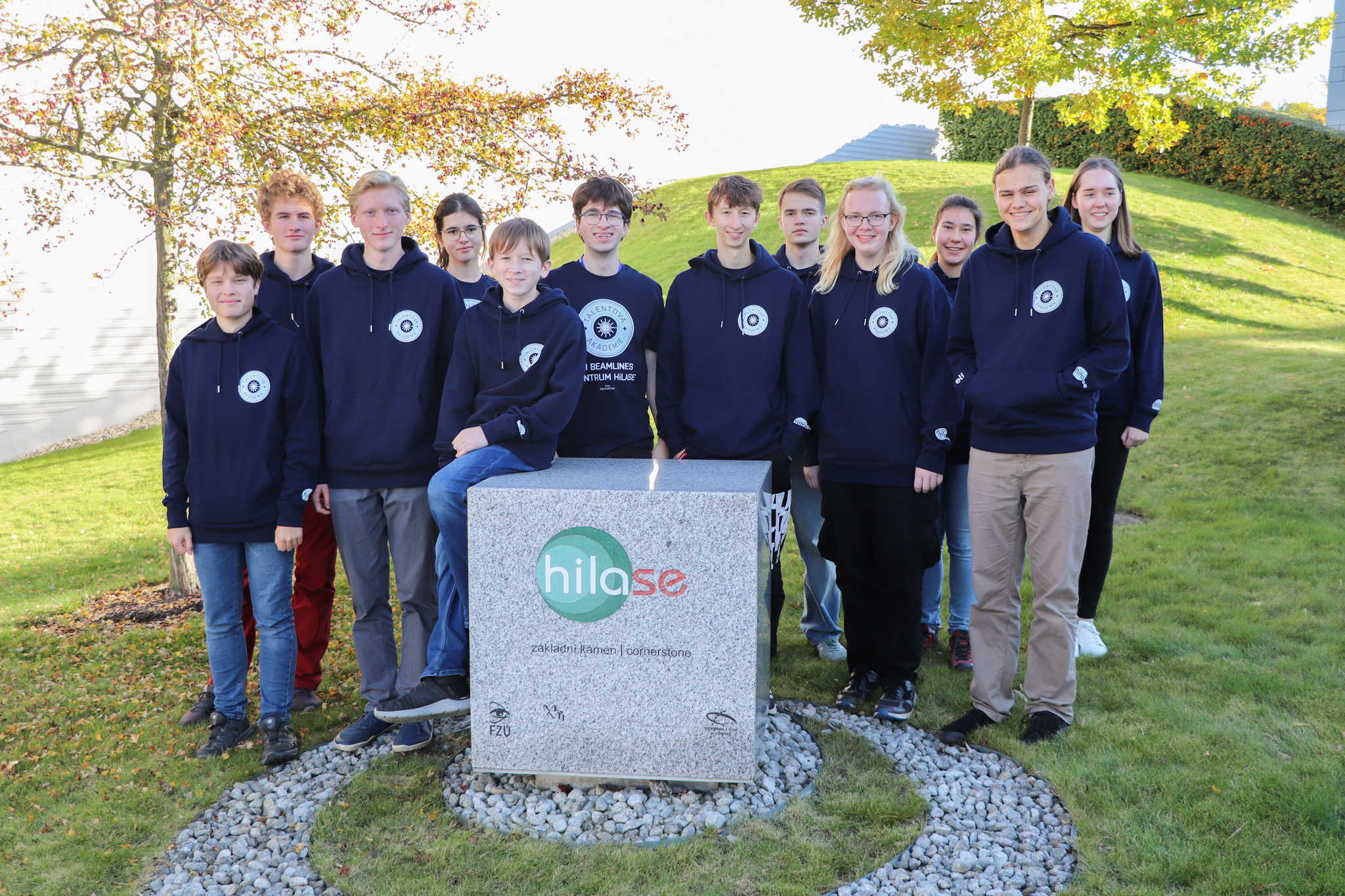
Science in Practice
The students approached the challenge like real scientists. They tested different gels, searched for the ideal exposure parameters, and observed how the laser interacted with the material. Gradually, each team developed its own working prototype capable of “writing” images or functional QR codes into the gel layer.
“That moment when the first readable shapes started to appear on the gel was incredible. Suddenly, all the optics, chemistry, and coding came together and made sense,” says Tomáš Michal, one of this year’s finalists.
From Student Experiments to Real Research
The Talent Academy concluded with a scientific student conference, where participants presented their results to experts from both laser centers. Four top students received invitations to a summer research internship, where they will join real scientific projects.
“This year, the students once again pushed the boundaries of what is possible, not only technologically but also as a team. They demonstrated exceptional commitment, passion, and true team spirit. And that is exactly what science today needs,” concludes Daniele Margarone, Director for Research and Operations at ELI Beamlines.
——————————————————
About the LASER-PRO Project
Talent Academy 2025 is part of the LASER-PRO project, which focuses on developing joint research and innovation strategies to advance the laser industry. Pilot projects address both regional and national industrial needs. The initiative aims to train a new generation of researchers, engineers, and entrepreneurs in laser technologies, while also supporting start-ups, spin-offs, and small and medium-sized enterprises in using laser innovations to increase their market competitiveness.
More information about the project can be found on its official website.


